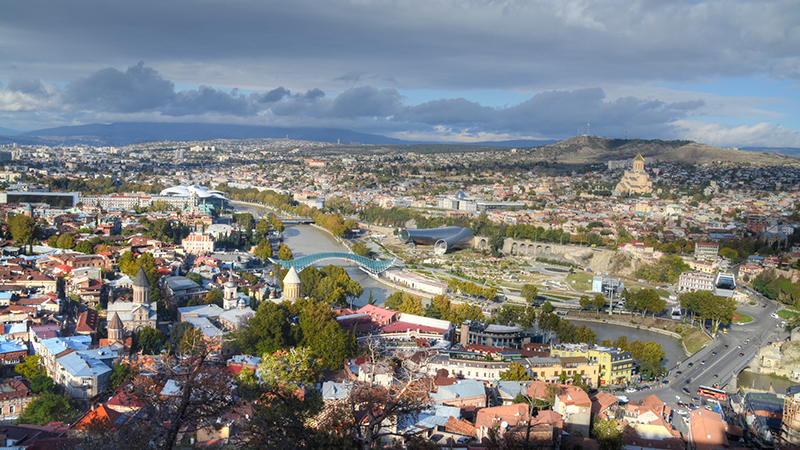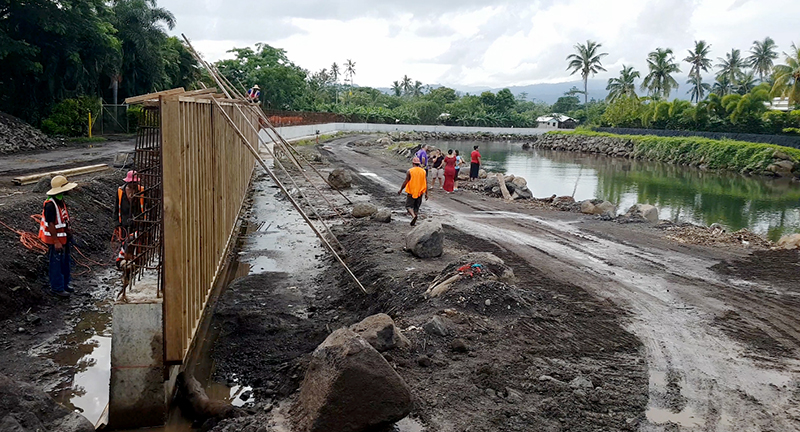As cities take center stage at the 10th World Urban Forum in Abu Dhabi, we must recognize the challenges they face but also seize the opportunities, including to connect sustainable cities with global action on climate change – perhaps our biggest challenge of all.
By Laura Hammett, Climate Change Adaptation & Urban Resilience Specialist at UNDP, Tw: @lmhammett
Did you know that in 1800, fewer than 10 percent of people lived in urban areas? Fast forward to today and half of the global population call cities home – and that proportion is on the rise. We are indeed living in an urban world.
In some ways, this era of urban transition has the potential to transform countries and economies for the better. Cities are dynamic centers of innovation, education, commerce and industry. In fact, they account for more than 80 percent of today’s global GDP.
Across the regions, however, urbanization trends are also happening in the context of pervasive inequality and poverty, gaps in infrastructure and services, massive human migration, and the existential threat of climate change that could literally leave millions of people underwater and push economies and societies to a tipping point.
Meanwhile, cities are producing over 70 percent of global carbon emissions.
The challenges
With their increasing populations, outsized disaster risk profiles and environmental footprints, cities are vulnerable to the impacts of climate change.
Yet they are also pivotal to the global solution: without a doubt, building efficient, low-carbon cities is essential to a sustainable future.
Some cities are already leading the way.
Yet stubborn challenges remain to scaling-up urban action and to connecting cities to national and global policy and finance.
First, municipal governments are faced with competing priorities. They often lack a long-term approach or the resources necessary to invest in resilience measures, effective waste management, or low-carbon, energy-efficient transport and infrastructure.
Second, many plans, policies, and budgets at the local level don’t account for carbon emissions or climate-related risks. Further, they are not well integrated with national priorities such as National Adaptation Plans or Nationally Determined Contributions.
Third, despite innovations already underway, setting up systems that track carbon emissions, or show risks at the city-block scale, come at a cost many cities cannot afford. These persistent data and capacity gaps mean cities are struggling to demonstrate need, prioritize action, and access the catalytic global finance that they need to transform.
Finally, there are challenges around financing. On one hand, in many countries the national government controls municipal finance disbursement, meaning cities have limited control over expenditures. On the other, as the global climate finance community is linked more with national governments, cities often have limited avenues to access large-scale funding.

In Georgia, where cities like Tbilisi face risks from floods and other climate-related hazards, UNDP is working with Green Climate Fund support to increase the availability of vulnerability and risk information and to enhance the use of this data in planning and decision-making. Photo: Tbilisi © Stephen Downes (Flickr Creative Commons)
The opportunities
These are indeed significant challenges. But there are also immense opportunities.
Here are four encouraging trends:
Cities are increasingly commanding a seat at the table when it comes to climate adaptation and mitigation
Crucially, national governments are increasingly involving cities in policy and planning processes, including National Adaptation Plans and Nationally Determined Contributions under the Paris Agreement.
Countries like Bhutan, Bosnia & Herzegovina, and Uruguay – a country where more than 90 percent of the population live in cities – are already prioritizing urban centers in their adaptation plans. This is helping municipal governments plan for, and fund, critical adaptation measures, while also informing national adaptation priorities.
Governments are increasingly recognizing – and seeking to scale-up – cities’ innovation in reducing emissions and adapting to climate change impacts
We see this promising trend across the regions. A couple of recent examples serve to inspire: In Serbia last October, the government showcased city efforts to build resilient, low-carbon communities as part of a national program focused on climate-smart urban development.
Meanwhile, countries like Malaysia are looking to leadership from cities and seeking to integrate urban climate policy with national programs – facilitating coordinated local and national climate action.

At the same time that they are areas of elevated climate risk and carbon emissions, cities are often at the cutting edge of innovation. Quito, Ecuador is widely recognised for its forward-thinking and participatory Climate Change Strategy. Photo: Quito © Kate Tann (Flickr Creative Commons)
Global networks are stepping in and facilitating knowledge-sharing across borders and enhancing access to the tools to bring them home
Several platforms have grown in recent years to facilitate exchange between cities facing similar challenges.
Examples we can look to include the Global Covenant of Mayors for Climate Change and Energy and the C40 Cities Climate Leadership Group, both of which are supporting city leaders to build their skills and evaluate options for climate action.
The United Nations Development Programme’s City2City Network is helping connect cities to innovations and learning tools that use a systems approach to planning, thereby integrating efforts to increase resilience, sustainability and inclusivity.

Since 2008, with UNDP and partner support, US$220 million of climate-resilient infrastructure assets have been protected; more than 50 disaster risk reduction plans developed; and ecosystem-based approaches put in place to protect coastal cities. Photo: With support from the Green Climate Fund and UNDP, Samoa is climate-proofing infrastructure along the Vaisigano river catchment in the capital, Apia. © UNDP
Multilateral funds and private entities are increasing support to climate action in urban areas
While historically the bulk of international climate finance has not been dedicated to city-scale solutions, the tide is turning, as reflected in the launch of the Global Environment Facility’s Sustainable Cities Impact Program.
Neutral parties, including the United Nations, are working with cities to develop capacities and to navigate this world of climate finance.
Recognizing the need for increased private investment, the Coalition for Climate Resilient Investment announced a partnership of over 30 organizations with USD 5 trillion asset value at the 2019 Global Climate Action Summit. Led by the financial sector, this Coalition seeks to integrate climate risks into decision-making for private investment, driving a shift toward a more climate-resilient economy.

UN agencies and other partners are working with the most vulnerable cities and urban populations to make sure no-one is left behind. Last year saw a number of important steps forward, including a UN system-wide strategy for sustainable urban development. and the Building Climate Resilience of the Urban Poor Initiative, launched the UN Climate Summit. Photo: Children in Kallyanpur, one of the urban slums in Dhaka, Bangladesh © UN Photo, Kibae Park
Accelerating action
By uniting a wide variety of stakeholders – including international organizations, donors, city governments, private sector, and civil society – the World Urban Forum sets the stage to discuss the challenges, but also to embrace the solutions. It’s a critical event in what the Global Commission for Adaptation have declared a “Year of Action” for a climate-resilient future.
There are some encouraging trends. Let’s now seize the opportunities – we have no time to waste.
